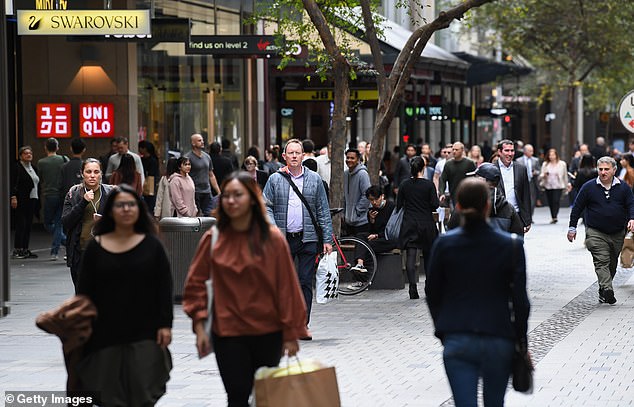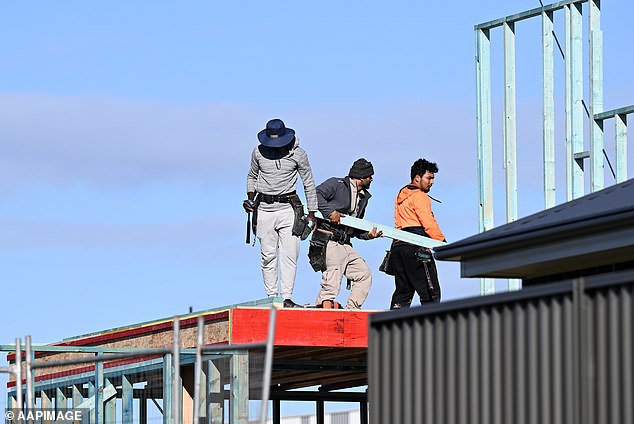Why Reserve Bank of Australia boss Michele Bullock is refusing to consider cutting rates soon – even though mortgage holders in New Zealand, Canada, UK and EU have already had some relief
The woman who decides the fate of millions of mortgage holders has declared that there will be no rate cut for the time being, despite what other countries have done this year.
Reserve Bank Governor Michele Bullock told a parliamentary hearing on Friday that Australia would not copy the approach of other central banks that have cut interest rates this year. New Zealand offered some relief this week.
“Financial markets are still pricing in a rate cut in Australia towards the end of the year,” she told the House of Representatives economics committee in Canberra.
‘However, the message from the board was that it is too early to think about rate cuts. Inflation is still too high and underlying inflation is not expected to be back in the upper range before the end of next year.
‘Based on what the board knows now, it does not expect to be able to lower rates in the short term.
‘I understand that this is not what households want to hear. People with a mortgage feel their cash flow is under pressure due to the rise in interest rates in recent years.’
The Reserve Bank of New Zealand cut interest rates this week for the first time since 2020, following the lead of its counterparts in Canada, the European Union and the United Kingdom.
But Ms Bullock also argued that this did not mean other central banks would start cutting rates aggressively.
Reserve Bank Governor Michele Bullock told a parliamentary hearing on Friday that Australia would not copy the approach of other central banks that have cut interest rates this year, with New Zealand offering some relief this week
“Other central banks remain cautious about the future path of interest rates,” she said.
‘Some have cut their policy rates somewhat, but they stress that the job is not done yet and that policy is still restrictive.’
While Australia’s cash rate of 4.35 percent is the highest in more than 12 years, it is lower than New Zealand’s 5.25 percent, the United Kingdom’s 5 percent and Canada’s 4.5 percent.
These central banks, along with the European Union, have cut interest rates this year.
“The same is true for Australia – we haven’t raised interest rates as much as some other central banks and we’ve been criticised for that,” she said.
Former RBA board member Warwick McKibbin, now a professor at the Australian National University, said the Reserve Bank should raise rates three more times to 5.1 percent, the last level reached in 2008, before the global financial crisis.
“Some commentators indeed continue to call for further tightening of monetary policy,” Bullock said.
‘We have tried to reduce inflation within a reasonable period of time, without causing unnecessary damage to the labour market.’

While Australia’s cash rate of 4.35 percent is at its highest level in more than 12 years, it is lower than New Zealand’s 5.25 percent, the United Kingdom’s 5 percent and Canada’s 4.5 percent.
The Reserve Bank left interest rates unchanged this month but published new forecasts predicting that underlying inflation (which strips out volatile price factors) will not reach the upper end of the RBA’s 2-3 per cent target until late 2025.
Unemployment hit a two-year high of 4.2 percent last month, as the most aggressive rate hikes since the late 1980s sent bankruptcies to a record high.
Ms Bullock said the Reserve Bank was aiming to improve its forecasts after her predecessor Philip Lowe said in 2021 that interest rates would remain at the historically low level of 0.1 per cent until 2024 “at the earliest”.
Instead, borrowers faced 13 rate hikes in 2022 and 2023, leading to a 68 percent increase in monthly variable mortgage payments.
“We have to be willing to learn from our mistakes,” Bullock said.
Headline inflation, also known as the consumer price index, rose to 3.8 percent in the year to June.
Ms Bullock said construction costs are included in the CPI, which also means Australia is seeing higher inflation on goods.
“There is a shortage of skilled workers, so their costs are going up. And then there are the costs of particularly energy-intensive products like concrete. Those costs also contribute to the cost of home construction,” she said.
‘All of these factors have led to further increases in construction costs in Australia. They have been included in our CPI and that has led to a slightly higher rate of commodity price inflation than overseas.’

Ms Bullock said construction costs were included in the CPI, which also meant Australia had higher goods inflation
